Tears of relief and joy at seeing themselves in a positive light and accepting themselves even more for who they are. These were the reactions to our coaching sessions with the Agile Masters. We have married our insights from positive psychology with agile working in coaching. And the reaction of the coachees is confirmation enough that we are on the right track...
Our personal journey
The start of this coaching program begins in 2019 with a congress. Topic: Positive psychology and the future of society. Venue: Bregenz. Organizer: Seligman Europe and the Academy for Child, Youth and Family. The "Positive Psychology Tour" with Martin Seligman, the founding father of positive psychology, has been running since 2009. This branch of psychology deals with the power of positivity. It is about making people's skills and strengths visible so that development and change processes are successful. Positive psychology can be used in many areas: education, business and personality coaching, therapy, health, etc.
The fifth Positive Psychology Tour 2019 focuses on the question: "How relevant is positive psychology for our successful future and that of our society?" The focus is on the importance of "positive" education and the links to positive leadership and positive management.
When we arrive in Bregenz, the sun is shining on Lake Constance. The weather suits our mood and the theme of the next three days. The congress is packed with outstanding speakers and inspiring stories.
These presentations inspire us the most and have a lasting effect:
- Bodo Janssen, a hotelier from Hamburg, tells his personal story about failure and success and how it is possible to run a business in a positive and appreciative way. The story is so lively, touching and stirring. We have tears in our eyes ...
- Markus Ebner captivates us with the topic of "Positive Leadership" and presents his PERMA-Lead* model: A scientifically based model that builds on existing models of positive psychology and has been proven to have an impact on sickness rates, creativity, burnout risk and much more among employees. We immediately think of our work and consider how we can transfer this to coaching with our managers.
- The conclusion and highlight of the congress is the presentation by Martin Seligman. His topic: Positive education and human progress. He touches us with the exercise of writing down in 100 words the vision of a positive future for our society and how we as individuals will contribute to it.
* A PERMA lead is a manager who positively influences the PERMA of their employees through their leadership behavior. The term PERMA was introduced by Martin Seligman in 2011 in his book "Flourish. Theory of well-being with 5 components as the basis for human flourishing" (see graphic).
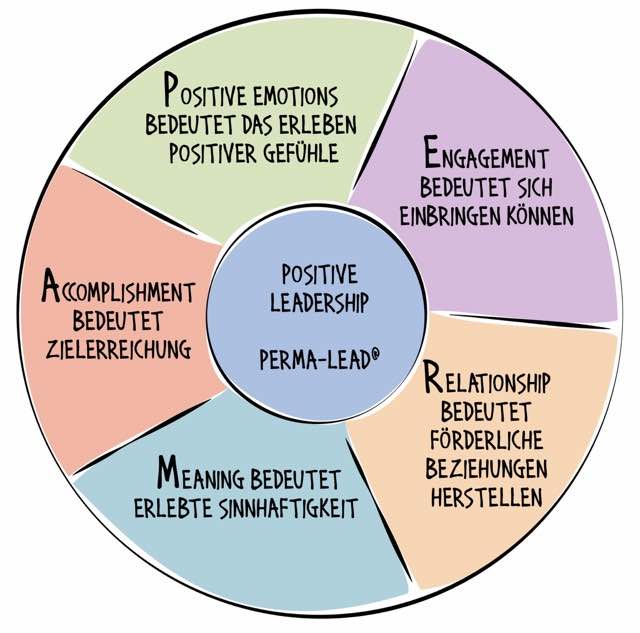
Product development in increments
We definitely want to secure and further develop our enthusiasm and the aha moments from the congress. No sooner said than done. We arrange weekly work sessions and work on a product that combines the valid results of positive psychology studies with our experience as agile coaches.
In the first sessions, we experiment with creative methods from the design thinking and lean start-up environment. We work out who our target group is, what their needs and challenges are and what a product that suits them might look like.
We know the needs of Agile Masters well from numerous coaching sessions in recent years. Nevertheless, it is important for us to discuss the product idea that is slowly taking shape with the target group. We want to find out whether it actually meets their needs.
We already have some customers to test the product: we have been commissioned to coach the Agile Masters of these companies as part of their training.
Our target group: Agile masters
Our product: A coaching process to become a "Positive Agile Master" in four phases (see graphic):
- Phase 1: Explore resources
- Phase 2: Dreaming a vision
- Phase 3: Shaping the future
- Phase 4: Derive and prioritize measures and plan implementation
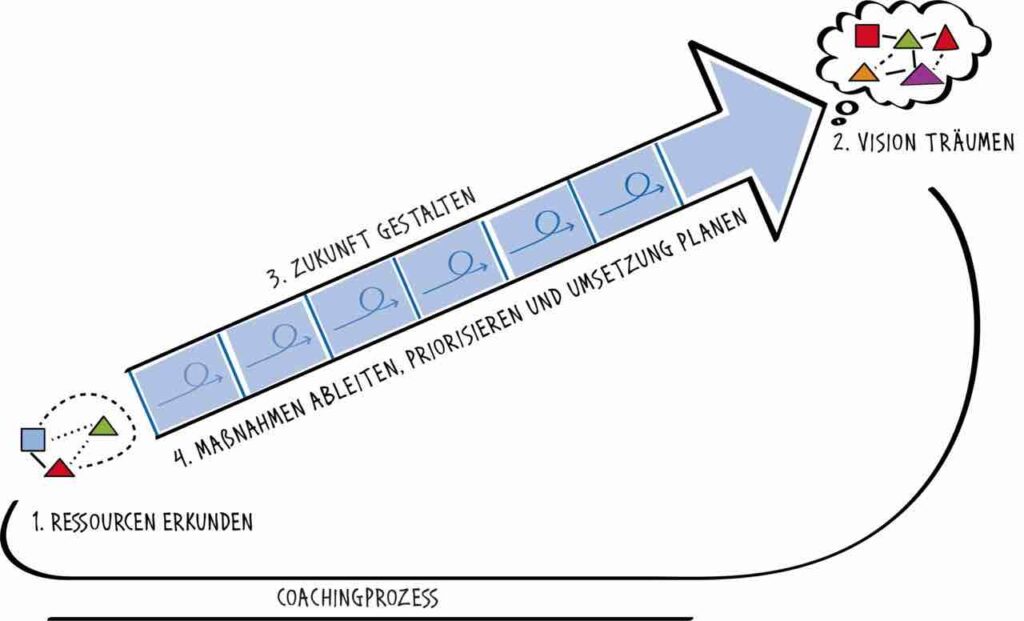
In short: In coaching, we work with the Agile Masters to determine their current position, which is to be understood as the starting point of their development journey. How long the development journey is accompanied by us as coaches can then be agreed individually.
In the following, we describe these steps based on our experience.
Practical experience and feedback
How does PERMA coaching work? In a total of four to five coaching sessions, we accompany coachees on their development journey. In the first step, the coachees find out what they are really, really good at. Then, in a retrospective, we work together to identify behaviors that will improve the team members' PERMA.
For example, we ask coachees to recall three situations in the last sprint in which they contributed to their team having fun at work. Exciting and valuable stories emerge: one coachee reports on a "self-made standing table challenge" that she initiated in her team. Each team member created their own standing desk so that they could work better when working from home. The challenge was a lot of fun and was also good for the team members' backs, which were aching from all the sitting.
Another reflection question in coaching is: "What three situations in the last sprint can you think of in which you helped team members to support or appreciate each other?" The answer from a pilot coaching session: "I launched a cross-departmental you-made-my-day initiative and thus helped to improve relationships with other units."
In the next phase, the coachee creates a vision of where the development journey should go. From this, he derives small steps that lead in this direction. We ask: "Suppose you could freely design the Agile Master role and live it as you imagine it in your wildest dreams. What would that be like?" The answer: "In future, I would like to work more on overarching issues and drive forward the agile transformation of the entire company. For example, I would then help to drive forward the culture of innovation and the development of new products in my area. I can make a difference and have a holistic view of the change." His next steps towards his vision include shadowing other Scrum Masters in the company, CSM certification and probably training to become an Agile Change Manager at wibas.
The feedback on our approach is very positive, because we are strengthening strengths instead of tweaking weaknesses. And the reaction of the coachees is confirmation enough that we are on the right track: Tears of relief and joy at seeing themselves in a positive light and thus accepting themselves even more for who they are.
Another Agile Master reports: "I have high expectations of myself and of accompanying my team on its development path. I often tend to change things that aren't going so well yet. By making myself aware of and appreciating what I am already achieving positively in the team on a daily basis, I take away the pressure of expectations to change what is not yet going optimally. It also directs my focus to the positive things and how I can build on them. That feels good."
Our initial experience shows that strengthening the strengths not only helps the coachees. This is because the positive energy is also transferred to the team members. In the spirit of a PERMA leader, this approach has an effect on both the manager and their employees.
Outlook
Since we have been dealing with the topic of "positive leadership" on a regular basis, we see many possible applications and inspire other people to look at their strengths and develop them further. We are aware that implementing positive psychology as a coach is challenging. It requires a positive attitude and experiential learning in small steps.
Because the greatest scope for improving performance lies in a person's strengths. With this in mind, we also want to continue our training precisely where we are already strong. We believe that positive psychology contains many other aspects that we as coaches can and want to use in our daily work.
We are already looking forward to sharing this newly acquired knowledge and this positive experience with interested people 😊 If you are interested, please contact us:
About the authors:
Caroline Haußmann is an agile coach and change management expert at wibas. Contact: caroline.haussmann@wibas.com
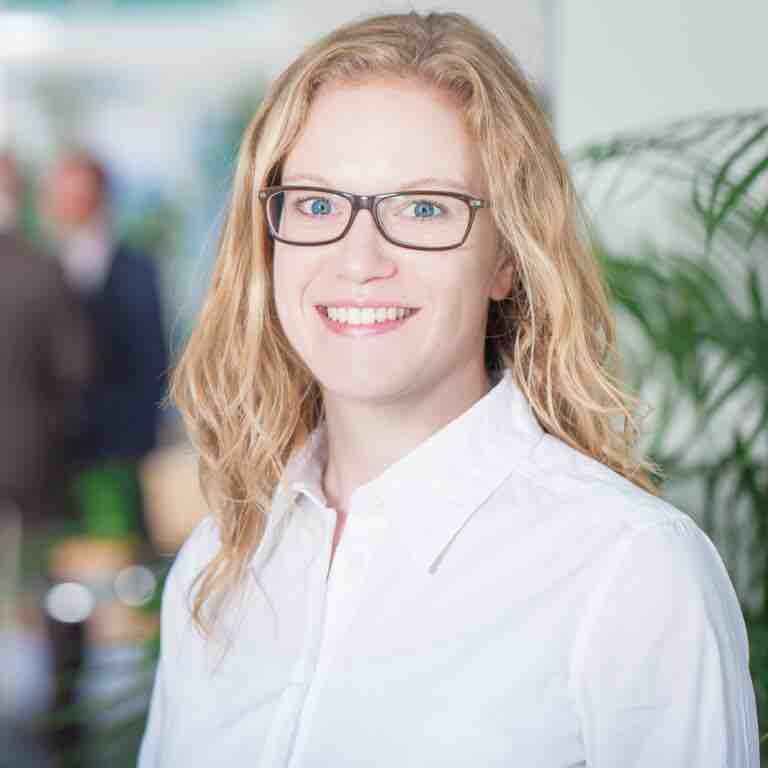
Sandra Sturmann is an agile coach, systemic consultant, change expert and wibas network partner. Contact: sandra.sturmann@partner.wibas.de
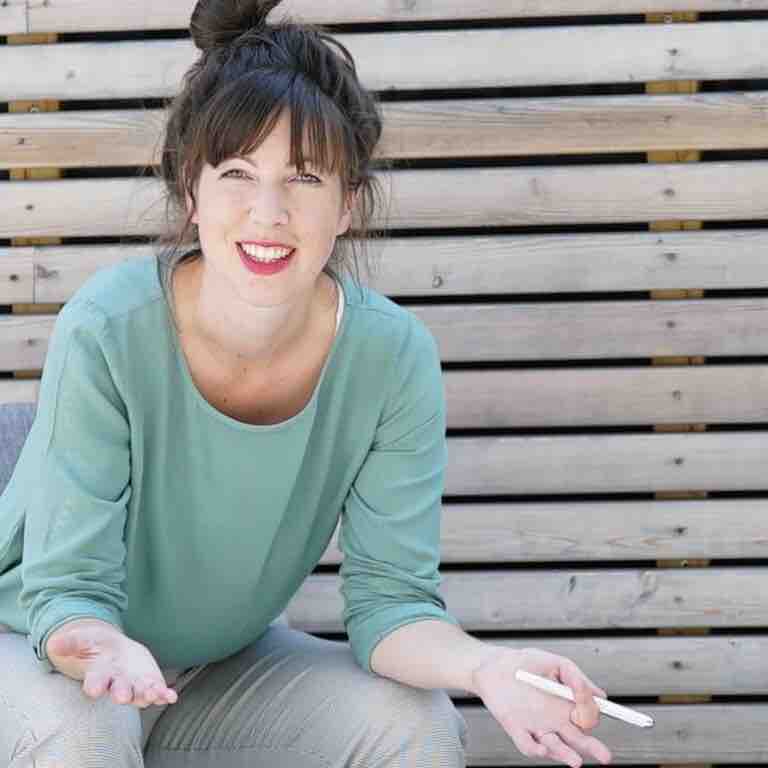
More articles in this digital magazine:
Inner growth processes as part of successful transformations
Or: what happens when we solve external structures?
Change initiatives often describe how external structures and processes in organizations should change. It is easy to overlook the fact that external change also requires internal growth. We present two models that offer an introduction to this ...
Conjuring up satisfaction - What does it take to make people in organizations feel good?
How are the people at wibas doing in lockdown? I conduct a telephone survey and ask "magic wand questions": What does it take for people in organizations to be happy? Looking at the answers leads us on a path to dealing with happiness ...

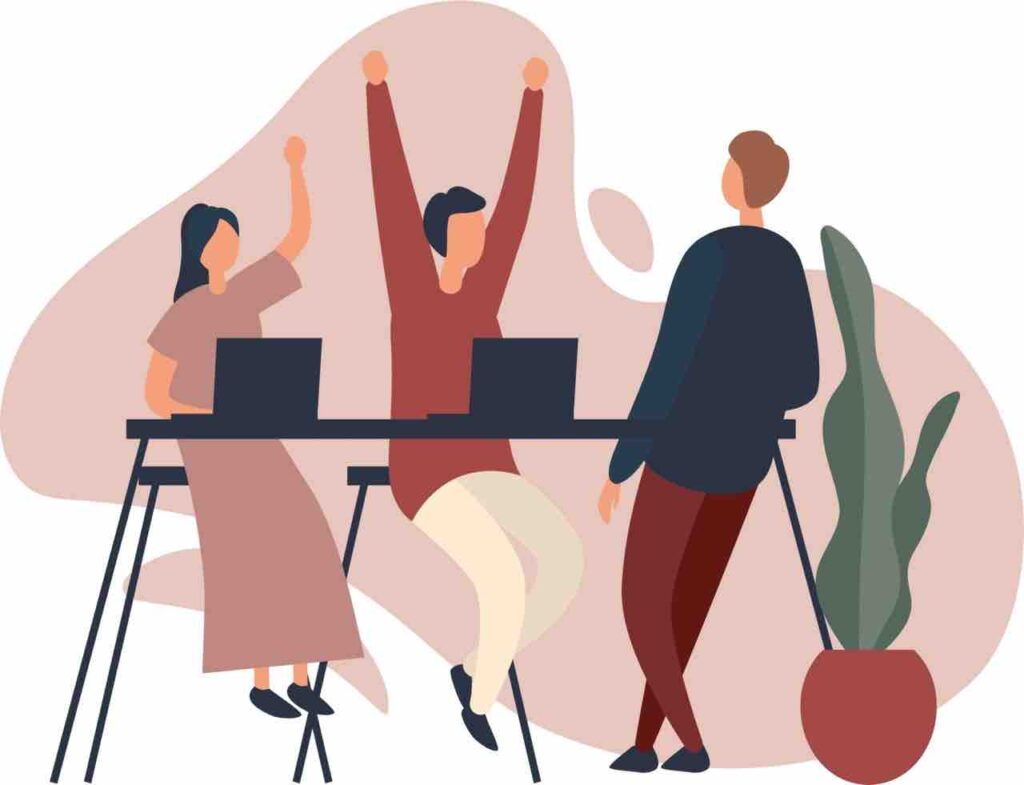

Write a comment